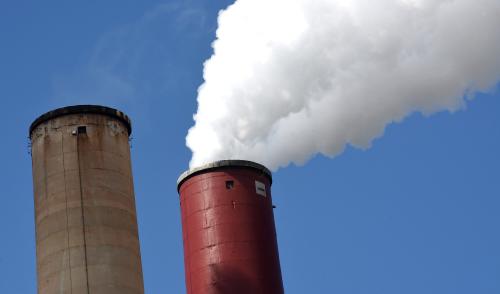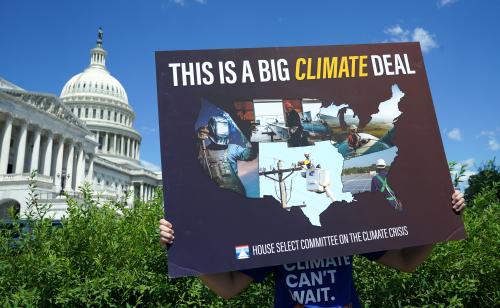Understanding the linkage between policy instruments and desired outcomes is important for the design and calibration of public policy actions. For climate policy, quantifying the linkage between policy actions and subsequent climate outcomes is also crucial, but this connection has often been difficult to perceive given the complexity of the relevant socio-economic and physical climate responses. To better understand the efficacy of climate policy, we propose using climate policy curves (CPCs), which quantify the relationship between the effective price of carbon dioxide (CO2) and the future increase in global temperature.
We estimate CPCs using an integrated climate-economy assessment model. The resulting downward sloping CPCs quantify the inverse relationship between carbon prices and future temperatures and illustrate how climate policy choices determine climate outcomes. The extent of future climate change is largely a policy choice. Our analysis can account for a variety of climate policies—for example, carbon or fuel taxes, emissions trading programs, green subsidies, and energy-efficiency regulations—all of which can be summarized by means of an effective CO2 price. Importantly, we also examine CPC uncertainty, for example, by perturbing the model’s equilibrium climate sensitivity to trace out the temperature range associated with a given CO2 price. In addition, based on the latest Intergovernmental Panel on Climate Change (IPCC) integrated-assessment model scenarios, we estimate an implicit CPC, which provides a high-level IPCC summary of the climate policy actions required to achieve global climate targets.
By focusing on the essential mapping from climate policy to climate outcomes, CPCs can assist in understanding complex climate-economy interactions. They provide a novel and powerful summary of climate policy that can help calibrate, assess, and communicate that policy. The broad range of CPCs we have considered underscore that while policymakers can, to some degree, trade off initial policy ambition with mitigation burden delayed on future generations, attaining the UN climate targets will require setting in place sizable carbon prices, or their regulatory equivalents, in the near future.
The Brookings Institution is financed through the support of a diverse array of foundations, corporations, governments, individuals, as well as an endowment. A list of donors can be found in our annual reports published online here. The findings, interpretations, and conclusions in this report are solely those of its author(s) and are not influenced by any donation.









